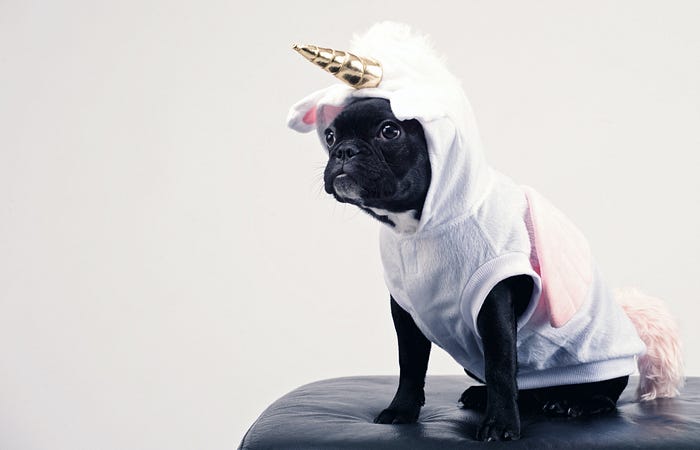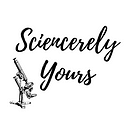Next Generation Science Standards: An Introduction for Teachers
(They’re not as scary as they seem.)
I started my teaching journey as a scientist and informal educator.
I loved tide pools and generally abhorred overly-structured learning — especially testing and standards.
A few years later, I still love tide pools.
I’ve also created standards-aligned science curriculum in a variety of settings: an aquarium, an international school, a US-based independent school, and currently for an NSF-funded project. Like a once-floating planktonic sea star now rocking the rocky intertidal, I’ve been through some changes.
It all started with a printout. I will admit to trepidation when I sat down with those 103-pages. At first sight, the Next Generation Science Standards (NGSS) are overwhelming.
As I familiarized myself, I realized the qualities which make the NGSS seem initially impossible are the same qualities which make them so flexible.
They are robust, yet allow an educator to curate the right learning experience for their class. The NGSS guide you to the core skills and content your students need to succeed, and then allow you to fill what works for them.
You know which skills need strengthening, which topics will excite your students, and which storylines will tap into their existing knowledge.
I now consider the NGSS a trusty sidekick. Rather than a roadblock, they are a roadmap for crafting Science and Engineering learning experiences.
Some Background
So where did these puppies come from?

The Next Generation Science Standards were rolled out in 2013.They were created in a two-step process by the independent, nonpartisan, nonprofit education reform organization Achieve, in collaboration with the National Research Council (NRC), the National Science Teachers Association (NSTA), and the American Association for the Advancement of Science (AAAS).
First, the Framework for K–12 Science Education was developed. Next, standards were created based on the Framework. The NGSS were born.
To summarize: Lots of smart people without a specific political agenda got together to make science education better. They got together again.
As of this writing, 20 states and the District of Columbia have adopted the NGSS. 24 states have developed their own standards based on the Framework for K-12 Science Education.

CCC, DCI, and SEP?!
The NGSS are comprised of three complimentary components: Cross-cutting Concepts (CCC), Disciplinary Core Ideas (DCI), and Science and Engineering Practices (SEP). One is not given more weight than the other, and any particular lesson may focus on one or more of the components.
Cross-cutting Concepts
No matter what grade level you teach, you will find common threads in science learning. Cross-cutting Concepts (CCC) are a way for us to connect different subjects to one another.
CCCs are the most subtle of the three interlocking parts: chances are you are already addressing one or more of the CCCs in any given science lesson.
There are only seven Cross-cutting Concepts which cut across (get it?!) the entirety of the NGSS.

Whether you are a Kindergartener or a High Schooler, you have the ability to interact with the CCCs.
Let’s take Cross-cutting Concept #2, Cause and Effect, as an example.
In the younger years, this CCC might be a explored through a simple test to support a student’s idea. You ask,“What happens when I let a ball go from the top of the slide?” A student raises their hand and says, “It slides down!” You can easily test this by heading to the playground and actually letting the ball roll down a slide.
At the high school level, students explore Newton’s second law of motion. Before they make any claims, they need to make observations and provide empirical evidence. They might collect data on position as a function of time for a ball which they drop from the stairs, allow to slide down an incline plane, and pull with a string by a constant force. Only after they have collected enough data and created tables or graphs, can they support their claims that force is leading to the ball’s motion (cause), rather than just happening at the same time that the ball is moving (correlation).
No matter what grade level you teach, CCCs are a good frame of reference for any unit, or even an entire year of curriculum.
Reflection Question: Have your students interfaced with each of the CCCs? How can you incorporate any CCCs that may be missing?
Disciplinary Core Ideas
There are just some things everyone has to know. If a child made it all the way though a K-12 system without ever learning that the sun is the center of our solar system, you might question what else they’ve missed.
No matter how amazing, engaging, and challenging your lessons are, you have to check in and make sure students have a good foundation in science concepts. The Disciplinary Core Ideas (DCIs) come to the rescue by helping to clarify which ideas are core to the discipline (ok, ok, I’ll stop…).

They are broken down into four subject categories: Life Science, Earth and Space Science, Physical Science, and Engineering Design. There are only a few DCIs per category.
Note the very first Earth and Space Science DCI, ESS1: Earth’s Place in the Universe.
In a first-grade classroom, ESS1 is addressed when students collect observations about the motion of the sun, moon, and stars in a journal. They can then describe any patterns they see, making predictions about what will happen in the future. A lunar phase calendar is a perfect example of this.
In a high school classroom, students might engage with ESS1 through Kepler’s laws. They can describe motions of orbiting objects in the solar system. They notice patterns, including their elliptical paths around the sun. They explore examples of orbits changing due to the gravitational pull of other objects or collisions with them. Trust me, high schoolers love to learn about celestial bodies crashing in outer space!
So where is the Earth? Definitely not in the center, right kids?
Science and Engineering Practices
The Science and Engineering Practices (SEP) are my FAVORITE part of the NGSS.
I know I told you that each component of the NGSS has meaning and value — they do. However, if I had only one imaginary crown to grant, I would dub the SEP NGSS Royalty.
They might then return the crown, and move to LA in pursuit of their own Netflix series. We would all binge-watch it. But I digress…
The NGSS seek to guide students on a journey to become independent problem-solvers, confident scientists, and creative engineers. The only way to arrive here is through a cultivated practice with allows them to learn, think, and do as a scientist in the field or in the lab would.
The SEPs help teachers guide students through scientific journeys. The goal is to make challenges in the classroom realistic and age-appropriate.
The SEPs scaffold this process, and make sure you will be the coolest teacher on the block.

When parents ask me what subject or content area we will be covering this quarter, I tell them: “I can answer that question, but what you really should be asking me is what Science and Engineering Practices we will be focusing on.”
This usually stops them in their tracks, and opens up an avenue for dialogue about the goals of our science classroom. Students learn best by doing, and any engaging lab or activity will naturally require students to complete at least one of the Science and Engineering Practices.
I spend most of my lesson planning time making sure they activate students’ innate scientific abilities through scientist behaviors. This can be accomplished in many ways, in any classroom, on any budget.
Let’s look at a quick example for “Obtaining, Evaluating, and Communicating Information” across age groups.
Students in first grade read booklets and watch short videos about parent-offspring relationships. They participate in a group discussion facilitated by you. One student says “chicks go cheep-cheep when they’re scared or hungry”; you write or draw this on the board. Their friend replies, noting that the mother hen pecked the ground to show her chick food.
Once there are a series of ideas on the board, you ask your students what these relationships have in common. The class works together to identify behavior patterns which help offspring survive, such as calls for help from offspring and responses from parents.
An eighth grader has just learned about Charles Darwin and is analyzing the same behaviors from an evolutionary perspective. You might give them one or two sources, and task them with finding three more at the library. Students must then evaluate the credibility, accuracy, and potential bias of each source before synthesizing the information they’ve gathered into a coherent narrative about behavior, natural selection, and the persistence of certain traits in populations over time.
They might write an article or blog post; they might create a podcast, video, or infographic. They share the product of their research with peer scientists (classmates) in a conference-style presentation: snazzy titles welcome.
Phenomena
I know I said there were three pillars of the NGSS that work in unison, creating a beautiful concert of scientific music. That’s still true, but there is one more — semi-unofficial — aspect of the NGSS left.
Phenomena (singular: phenomenon) are like undiscovered rock stars that jump onstage with our NGSS band. Phenomena have star power; they motivate your students to carry out their scientific endeavors.
Phenomena or Anchoring Phenomena can be just about anything around us. It’s best to choose phenomena students relate to and want to learn more about. This is where you really get to show off your cool teacher credential.
A blue whale’s heart weighs about 640 times as much as ours. California’s wildfires turned the sky orange this year. Vinegar + baking soda = bubbly eruption. Could unicorns be real?
Phenomena provide a focal point for your work in the lab — an anchor. When students ask probing questions, when they really, really want to know the answer, the real work can begin.
Each of the examples above can be linked to aspects of biology, chemistry, physics, earth science, and engineering. Some make more sense than others, but with a little creativity, you can make just about any combo work.
For example, the unicorn question can anchor or lead into units about population biology, heredity, and genetics (Is it possible for a horse to breed with a rhino or a narwhal?), bioengineering (What is CRISPR, and can it make my dreams come true?), or earth sciences by way of paleontology (Which soil types and climatic conditions best preserve skeletons; is there anything in the fossil record to indicate the existence and subsequent extinction of magical creatures?).
If you think this sounds far-fetched, my 7th-grade final featured unicorns and punnet squares. The unicorns were highly motivating, and they proudly decorated the lab for several weeks. Our third-grade class had rich, technical conversations about CRISPR thanks to a unicorn flip sequin shirt craze.
Your students’ obsessions are their science opportunities.
The NGSS Nutshell
The Next Generation Science Standards might seem confusing at first, but they‘re pretty great once you get to know them. They can help guide a stellar science and engineering education for your students without unnecessary prescription.
Remember that the NGSS are a humble-but-mighty roadmap. You’re the fabulous (and possibly sequined) tour guide on this journey.

